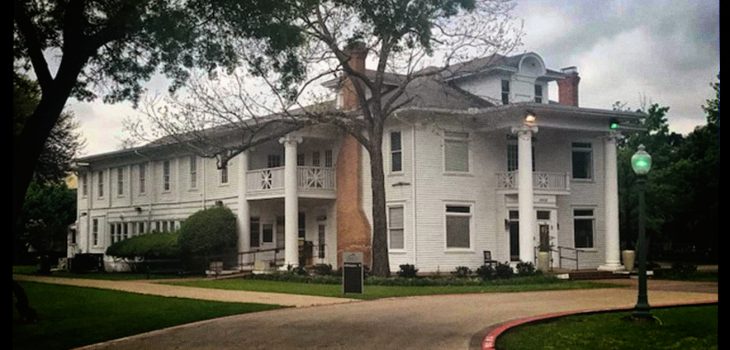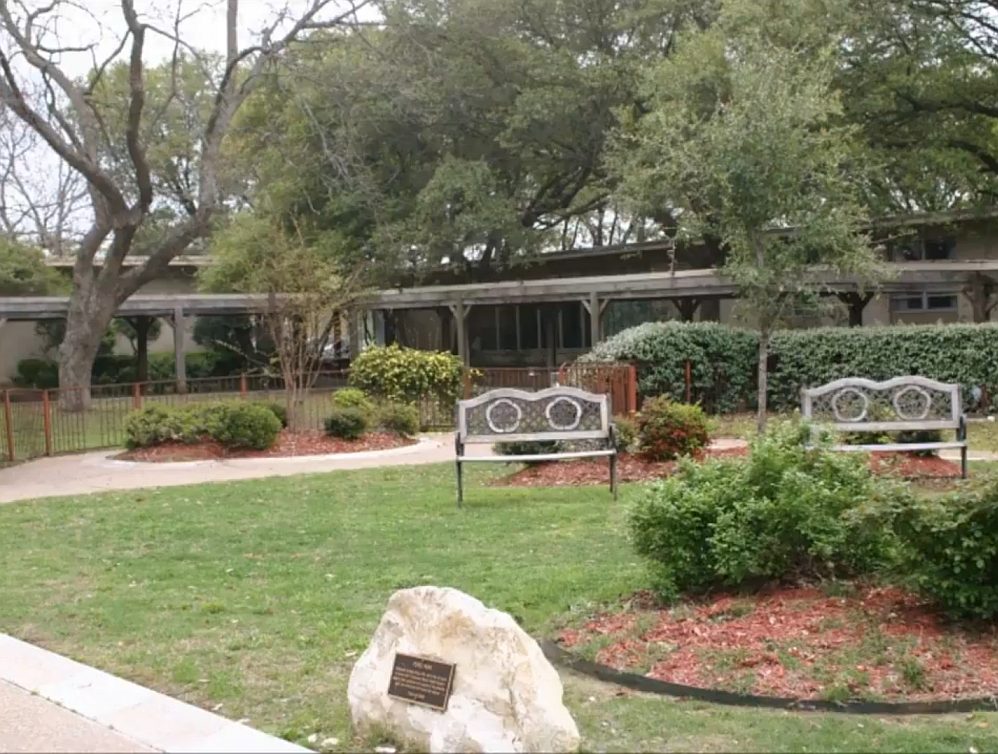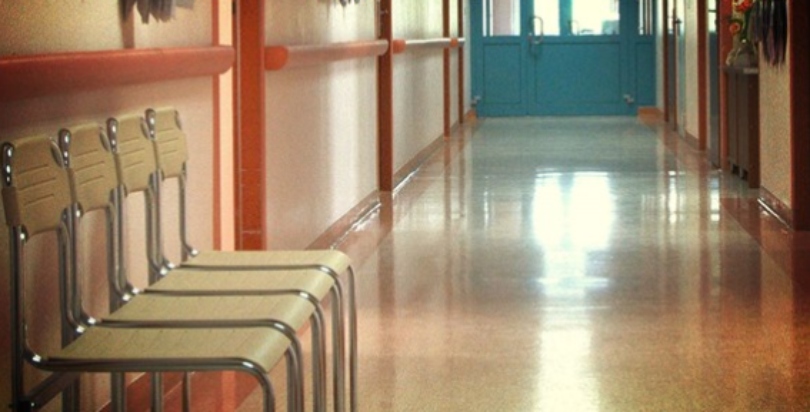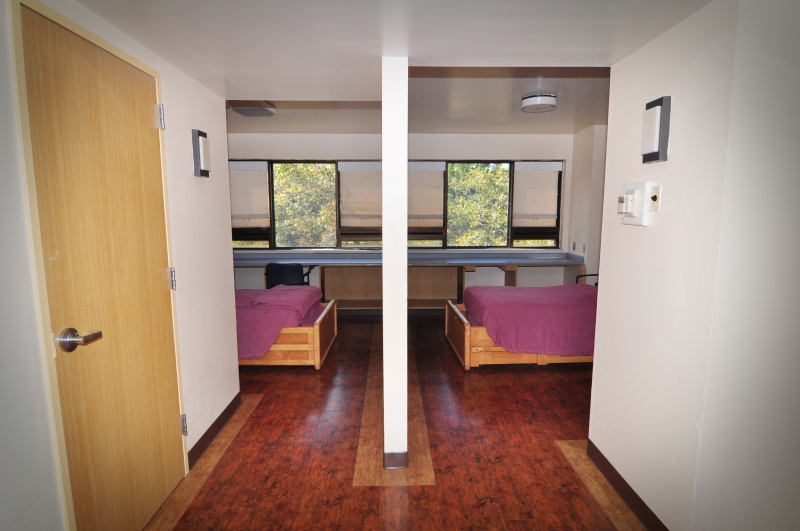
Life at Timberlawn
Timberlawn mental hospital was founded in 1917 .
In the beginning, it was a prestigious institution where rich, private-pay patients came for psychoanalysis and long-term stays.
“Timberlawn is for the maladjusted wealthy bourgeoisie,” as stated in a Texas Monthly article in 1976.
The hospital was acquired by UHS in 1997. Many comments indicate the place was problematic long before and not the place for the ‘maladjusted wealthy’ people anymore.
Timberlawn had a number of severe incidents.
For a quick overview check out UHS behind closed door website.
There were allegations of child abuse, sexual harassment , rape , violation of life safety code standards which lead to a suicide of a depressed woman who killed herself while being left alone at the facility.
In 2016 a patient killed psychiatrist Dr. Ruth MarDock due to lack of security.
There were also claims that patients were given psychoactive medication without showing signs of aggression or agitation in order to silence them.
Violent fights among patients, dirty conditions and medical records issues were not helping the situation either.
In the end, Timberlawn was closed down in early 2018 after the license was revoked due to safety issues.
A typical day at Timberlawn for suicidal and depression patients:
- on entry there would be medical check ups, drawing blood, prescribing medicine and so on
- shoestrings, belts and all tools that could aid in suicide attempts would be taken from the patient
- the staff will provide the patient with socks, slippers and clothes; lot’s of inpatients stroll around in pajamas and night gowns
- the day is regulated – eating breakfast, lunch, dinner, taking medicine, going to group therapy, attending classes
- suicide patients would not be allowed to be alone (depending on the severity they will also be sedated)
- genders are separated but in the same hall; usually accommodation in 2-beds room
- there were 144 beds in total, 2 sections in the building for inpatients: A – mild cases / B – severe cases
- due to boredom time would pass slow but patients were allowed to watch TV (fixed station), playing games like checkers, chess and meet each other in dedicated areas
- most of the time the doctors make their rounds quickly / a few minutes for each patient at max due to time constraints
- techs and nurses were on shift most of the time
- patients reportedly did their own therapy by visiting each other and talking until late night
- there was lights out time for patients but some stayed up late anyway
- in some severe cases the staff would use restraints
- some people reported staff abusing power by making sharp-tongued or not sufficiently obedient patients life’s harder
- if treatment went well and patient showed improvement, they were allowed to go see a movie or play board games, participate in arts or crafts
- there was a buddy system where two inpatients could sign in and out of the place with a buddy of the same privileges at their side
Timberlawn received overwhelming bad reviews online from both patients and employees.
Though some people also provided positive reviews they rarely come from former adolescent patients.
It seems a strange place that leaves so many adolescents with more issues than before they were checked in?
Ongoing until today, there are groups dedicated to share their experiences at Timberlawn and also (non-public) patient groups on Facebook like The Orange Burlap Unit for people wanting to heal the wounds of Timberlawn.
The experiences vastly differ depending on diagnosis, therapy and assigned psychiatrist.
But all in all, at some point in the 80’s, the main goal at Timberlawn seems to have been shifted to ‘make the most profit’ out of the patients. When insurance ran out they were discharged, ready or not. To keep it from running out they were diagnosed with the most profitable mental illness – Bipolar II.
It is a systemic failure and Timberlawn as a hospital is only partly to blame.
Some comments from an old review website (does not exist anymore, left all grammar mistakes for authenticity, sic!):
Posted 07/06/08 By Anonymous
My son went to Timberlawn for depression. They did nothing to help him, but give him pills to overdose.
I had told them that he was suicidal before they released him. I talked to a detective in Dallas who was in charge of my son’s overdose.
He knows of two other cases where this happened. Both died! I talked to hospital personnel at the facility where my son was taken after his overdose, they also said that Timberlawn has a bad reputation Please listen to these reviews. They only made things worse.
The twists of Timberlawn. By Olivia E.
I went their during the year of 2003-2004. I was only 13 when my mother sent me there. Yes I was bi-polar and yes I had sleeping problems and yes I was angry at times but Timberlawn was something I never want to go back to. I have gone there over 9 times.
It was terrible. During the day times when we would have our daily meetings girls would go insane because no one would listen. Girls tried to brake the windows to get out, these girls were tiny girls maybe 100 pds and the guards that would take them down would be at least 200 pds with just muscle.
All it was during the day was arguing and guards and nurses yelling and girls in the quiet room, multiple shots each day. They would even put at least 3-4 girls in the same quiet room. Once I tried to help a girl and they shoved me in there and tried to give me a shot but I wouldn’t allow it so I grabbed the needle and throwing it out of the room and fighting back. Then they put the same other girl in there with me and she pulled out her tampon and swung it around the room. Very disgusting.
The nights were worse. Now right across from the nurses unit is the boys area.
During night some of the girls would sneak over to the boys area and have sex. I know this because I was placed over at the boys area in my own room because I couldn’t get along with the girls. But then when I had to sleep in the girls side because the boys were acting up I remember hearing crying in the next room. (its two beds to each room so meaning two girls to each room) I heard hitting as well so I snuck over there and the girl in the room was getting pounded by the other roommate. So I grabbed her and through her out of the room and started fighting her.
The night nurses didn’t do anything till all the girls came out made a giant fight of it. Hitting the nurses and guards throwing chairs. Then running to the boys side and fighting them. It was horrifying.
The nurses and guards retreated the counter area and shut the shutters to protect themselves.
Timberlawn is no where for a teenager to be. Not even for a young child, please I beg of you. Do not send your children there, it will destroy their social and personal life, people wont talk to them and avoid them in result of the child hiding from the world. I have problems from it.
I remember nightmares and screaming and crying girls killing themselves and girls screaming from saying they saw things in the grave yards. Yes theirs a graveyard next to the building. Now I have a child on the way.
I have done multiple drugs and done things in my life that I regret because I never had the right help. & I’m only 18. Don’t do that to your children. Please dont. & if you think they dont use restraints they do. I was in a straight jacket during the days, and bed restraints at night. Think about it.
Posted 10/31/08 By Secret S. (page does not exist anymore, leaving the link here for authenticity)
I just found this site and I have to say that I agree about the food, it sucked beyond all reason, and no the accomodations are not the best in the world, but what it all boils down to is what you’re there for, and I found it very helpful!! I was there to get help for Depression and Dissociative Identity Disorder, and I got that help in a major way. The therapists are absolutely wonderful, and as for Colin Ross, I have to say that there aren’t too many people running facilities like this that actually participate in the program the way he does.
Most places you would be hard pressed to ever see the person “running the show” let alone get treatment from this person. As with any place and any therapy, at Timberlawn, you get out of it what you put into it. If you are just going to sit there and hope they will save you, you are going to be grossly disappointed.
Though they will come around and “kick your butt in gear”/give you a gentle push in the right direction, it is up to you to do the work. They are there to help you and support you in anyway they can, but it is your life, your therapy, your choice to get well. You get out of it, what you’re willing to put into it. If you go there really wishing change and are willing to be upfront, honest, and open to the process, you will learn a lot about yourself and relationships, and life in general. Then when you leave, you will continually look back and learn more and more.
I left Timberlawn 8 months ago, and I am still finding myself processing stuff at a deeper and deeper level that I got form that program. I felt like they really and truly understood DID.
The groups were very helpful!! I met some wonderful people there (clients) who I still stay in contact with via email, etc. I had never met another person with DID face to face prior to going to Timberlawn and that was a huge part of my healing…being able to be in the company of others with DID. The therapist only meet with you 3 times a week, and though I would’ve liked to see that changed to 5, my individual therapist would allow me to meet with her in small increments in between as needed, and that flexability helped. I know that others were available in that manner as well.
I think the only thing that really I would recommend changing is the food quality. I am an educator, and studies do show that people cannot learn in the same way with poor nutrition.
The food was really poor, and there were pretty much no choices, so occasionally I skipped the meal entirely. Also, it became a source of general distraction for the clients as we, at times, could not think of much more than how crappy the food was and much we would like x,y, or z. None of us expected wonderful food, but it honestly could’ve been better. School food is 10 times better!
Overall, I really recommend the program though. It helped me in ways that overrule any and all negative aspects. If you would like to read more of what I learned at Timberlawn, you can visit my blog and read the article I wrote there on the subject.
Posted 09/12/08 By Laura W.
As an adolescent, I was treated at Timberlawn inpatient from December of 1984 to September of 1986. The program helped me tremendously. There is no way I could be where I am today if I had not gone through this long-term treatment. It changed my life. Although back in those days, Timberlawn was the 3rd Best Hospital in the Nation. And Private meant Private. We were involved in meaningful structure and worked with exemplary staff and doctors.
I lived on the Girls’ Adolescent Unit. This unit held twenty females ages 12 to 18. We were like a family. This was long term treatment and nobody was discharged inside of a year hospitalization. We had Division Meetings with the staff and nurses every day; our doctors saw us for rounds, we had our own therapist, and group therapy. I suppose long term treatment in the present day is defined as a three-day thing. No wonder it’s dirty and the staff are irate. Healthcare has changed – it’s a free-for-all. You don’t get what you pay for anymore; nobody’s maintaining the components.
And doctors have to follow treatment plans that are implemented by some MBAs and Business people.
But at least I can say that my experience in the 80s is something for which I am grateful. If there were politics or friction within the hospital administration and associates, I never saw it.
It was a professional institution focused solely on the care and development of mental health patients.
In the earlier days, the center was named Timberlawn Sanitarium. When I arrived there it was named Timberlawn Hospital.
The different housing units were named (to the best of my memory): Children’s Unit, Boys and Girls Adolescent Unit, Bloss (adult), Berkett I and II (those 2 were the newer white buildings), also Chevins (adult women), and Witt (adult men).
The food was first class; there was no turnover in staff. It was the real deal.
If anyone had the Timberlawn experience in the 80s, I’d be interested to hear your review. thanks.
Heartbreaking account by JC
(not for the faint of heart)
“My parents placed me on the adolescent girls ward of Timberlawn Psychiatric Hospital at the tender age of fifteen.
I had been suffering from severe depression, anxiety disorder and suicidal tendencies for many years even at that young age.”
“The next two years were so horrible I can’t really descibe them. All I can do is make a long story short.
The unit was filthy, tiny, and roach-infested. The carpet was dingy, fifteen years old, and smashed down,
and you could tell that it used to be purple with green and yellow and orange stripes. The wall was plastered with orange burlap. It was an environment of terrorism.
Punishment was the norm. Relief from it was a rare exception. The doctors spent perhaps a total of five hours a week on the unit, each, on a good week. You never saw them.
You only saw the angry, vicious, vindictive yet totally untrained “mental health workers” who were assigned as jailkeepers of sorts.
Upon entering the hospital, the patient is deprived of everything human; here are only a few examples.
The first thing they told me when I entered the unit was that I was not permitted to leave the “Big Lounge”. But that was really only half of the room. There was an imaginary line drawn down the middle, dividing a 20′ by 30′ space into two parts, the “Big” being the portion closer to the nurses’ station, and the “Small” being the farthest away.
It seemed ludicrous, shocking, unnatural. But I had no choice but to obey. I had a bad feeling about what would happen to me if I didn’t.
The next thing they did was to put me on “Suicide Precaution” (SP), and lock everything I owned in my closet.
I had to be accompanied by staff everywhere I went. They even made me leave the door open a crack as I went to the bathroom, or took a shower, or changed my clothes.
In all honesty, it is the most degrading thing I had ever experienced, especially since it was totally unneccessary and uncalled for. I felt violated, as if I were being raped.
The hospital was merely a continuation of the abuse that I had experienced at the hands of my parents, and in that way these “mental health workers” were rubbing salt in my wounds.
I was in a constant state of pain and terror. If I made the slightest mistake, even if it was totally innocent and well meaning, I was punished. Every moment of our time was regimented. It didn’t just stop at being forbidden to cross a line. I was forbidden to look at the television, even though it was in full view, or to ask someone to change the station on the stereo, even if it was bothering me, or to sleep, lie down, close my eyes, read, write, eat, drink anything but water, except at meals, and then you could only eat the disgusting, greasy food that came into the unit on a metal cart.
I was given so little time to do my necessary things; showering, shaving, putting on makeup, doing my homework, eating, cleaning up my room; that I had to hurry like the world was ending to get them done. Then I had to go out and sit on “privilege”. That was part of the abuse. They wouldn’t even let you call it a punishment. I had to sit there for hours and hours with no diversion, dying of boredom and anxiety, unable to think of anything but the fact that I was being watched every second, and that any moment now, I would make a trivial mistake, and receive cruel and unusual punishment in return. The hospital controlled the girls so well because of their free and lavish use of restraints. Five-point leather restraints..”
Pat’s story
“In 1989, Pat Price was held against her will in a highly-regarded mental health institution in Dallas, Timberlawn Psychiatric Hospital. With the facility close to bankruptcy, doctors and administrators discovered she had the means to pay for treatment indefinitely. They held her for two terrifying weeks while they tried to have her committed for unnecessary long-term treatment.”
More recent review:
Comment by Peg.T
“2. They would wait until you were sleeping after taking your nightly medicine (they doped me up with strong antipsychosis meds, although I was there solely for depression) to wake you up and ask you questions about treatments you had to consent to. Clearly they wanted you to be as incoherent as possible when they did this.”
“9. I checked myself in hoping that I would really get some help, but they had no activities for you to engage in, so you just took medicine, ate breakfast, watched Fox News, ate lunch, watched more news, took medicine, ate dinner, and watched news until you fell asleep. Surprisingly they had no “lights out”, so many of us stayed up til 1-2am talking and making our own therapy sessions. “
(Swipe the pictures)
Timberlawn Mental Hospital
Timberlawn, the stuff of nightmares?
For some, this may ring true. But for Jeremy back in 1990, therapy at Timberlawn seemed to be turning out well on a social level – although the psychiatrist and counselor could not really help him in the long term.
He met Michelle there and connected with a lot of kids from the inpatient program at the hospital. They were very close.
It is true that some of the kids from Timberlawn called Jeremy’s parents during the weeks before the sad incident, trying to alert them to the fact that something was not right. They would know each other good enough to sense when something was amiss. And even on his last day, Jan 08 1991, Jeremy would call his friends at Timberlawn from the commons area near Richardson HS. Unfortunately, the parents did not follow up with actions after receiving the hints from several friends of Jeremy.
I have found no comment or anything in the official records that blamed the hospital and the assigned counselors for any of Jeremy’s lingering problems.
There were some comments geared against the health care system. It became apparent the system lets down people like Jeremy, on more than one level and on several occasions.
Sadly, suicide rates of adolescents are still increasing as numerous studies attest:
“Age-adjusted suicide rates among youth have risen by 24% over the last 15 years”
“Trends in Suicide Ideation or Attempts Suggest Worsening Mental Health Problems”
“Adolescents at Increased Risk”
“Adolescent boys 15 to 19 years old had a completed suicide rate that was 3 times greater than that of their female counterparts, whereas the rate of suicide attempts was twice as high among girls than among boys, correlating to girls tending to choose less lethal methods”
Mental health issues became more prevalent than ever before. Someone has suggested that modern society creates alienated minds. Despite becoming more connected via technology, as individuals we grew more isolated and vulnerable to peer pressure than ever.
Dr. Robert Putnam wrote about the decline of ‘social capital’ that coincided with rise of technology in Bowling Alone. Kids and adolescents are most susceptible to the impulses society provides – fast paced, neurotic, disenfranchised impulses, that is.
We take psychologists’ words as truth but psychology is a soft science and inherently biased. It provides solutions in ways of medication and therapy. It works for some but not for everyone, especially in the long run.
It is apparent we need long lasting solutions as a society to be able to provide help to those in need.
Therefore maybe a change in societal attitude and scientific approach is needed.
If you got anything to contribute or correct, please don’t hesitate to drop me a line, Email or write a comment below!





Leave a comment